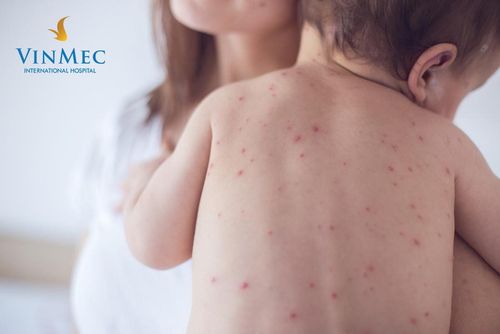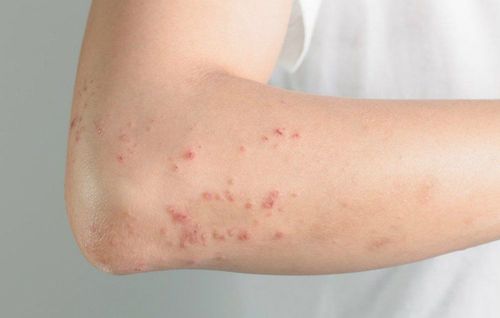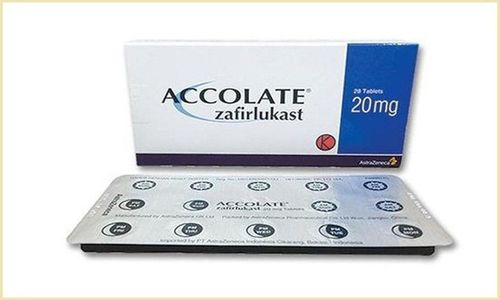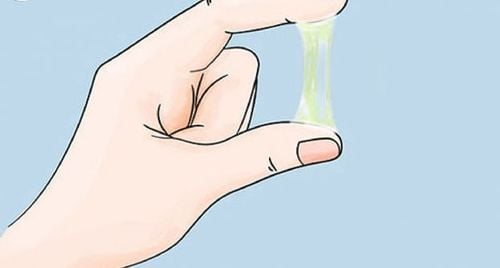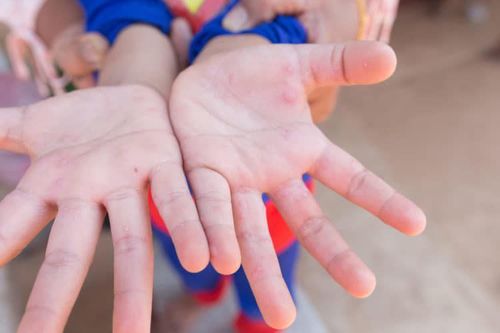This is an automatically translated article.
Weak resistance is the reason why children are easily attacked by viruses and bacteria in the winter. Parents need to pay special attention to and monitor the health of their children to detect early signs of disease, treat them, and avoid serious complications.
Some common diseases in children in winter can be mentioned such as dengue fever, hand, foot and mouth disease, flu,...
1. Dengue fever
Dengue fever is one of the common diseases in children in winter. Dengue fever is an acute infectious disease caused by the dengue virus. The virus is usually transmitted from person to person through an intermediate host that is a mosquito, the pathogen enters the body after 4-5 days, and the child will contract dengue fever. Early signs of dengue fever in children include:
Prolonged high fever, which can be as high as 40 degrees Celsius. Severe headache Rash Rash Severe disease can cause nausea, vomiting, cold feet and hands ... Dengue fever treatment is mainly symptomatic treatment. Dengue fever is classified as a dangerous seasonal disease and can progress quickly and even become an epidemic.
Therefore, when the above symptoms appear, parents need to immediately take the child to a medical facility for timely examination and treatment. Along with that, when the season changes, the best way to prevent disease is to kill mosquitoes and larvae. Prevent mosquito bites by dressing children in long-sleeved clothing, sleeping in bed nets, and applying mosquito repellent, as well as measures directed by local authorities.
2. Hand, foot and mouth disease
Hand, foot and mouth disease in children is very common and contagious, caused by acute Coxsackievirus and Enterovirus. Hand, foot and mouth disease in children can be easily transmitted through many different ways, especially the gastrointestinal tract or by direct contact with secretions such as feces, saliva, blisters, nasopharyngeal fluid,... Typical signs of hand, foot and mouth disease in children include:
Blisters on the skin Oral mucosal ulcers Severe progression: difficulty breathing, vomiting and convulsions. If the disease is not treated in time, it can lead to dangerous complications such as pneumonia, encephalitis, myocarditis, ... even death. These current hand, foot and mouth treatments help reduce the risk of dangerous complications in children. Therefore, when there are signs of hand, foot and mouth in children, parents need to immediately take them to a medical facility for timely examination and treatment. Currently, there is no vaccine to prevent hand, foot and mouth disease, effective prevention measures are to limit contact with sick people and wash hands with soap properly.

Tay chân miệng là bệnh thường gặp ở trẻ vào mùa đông
3. Asthma
Asthma, also known as bronchial asthma, is one of the life-threatening chronic diseases if not treated promptly. In Vietnam, about 8-10% of children have asthma and it often increases during the season change. The characteristic symptom of bronchial asthma is a wheezing cough that lasts for a long time and can recur many times. Coughs tend to increase at night or early in the morning, especially children can cough violently leading to difficulty breathing.
Treatment methods for bronchial asthma in children are mainly aimed at stopping asthma attacks and limiting dangerous complications. Therefore, parents need to monitor and recognize early symptoms of bronchial asthma in children. Avoid exposing children to and living in a polluted, smoky and cigarette environment. Correct nutritional supplementation, limit foods that increase asthma attacks in children with a history of bronchial asthma. In particular, in winter, it is necessary to keep the child's body warm and fully vaccinated to prevent infectious diseases.
4. Respiratory infections
Respiratory infections are one of the leading causes of death in children. Worldwide, each year about 4.3 million children under the age of 5 suffer from respiratory infections, mainly pneumonia and bronchitis.
Symptoms of respiratory infections are very diverse, fever, especially when children have fever in winter, cough, stridor, rapid breathing, skipping feeding or eating,... Some children may experience these symptoms. other symptoms such as bloating, vomiting, loose stools, shortness of breath, fussiness,...
Current treatment for respiratory infections is to minimize symptoms and prevent dangerous complications. Preventive measures include cleaning the living environment around children, supplementing with all kinds of nutrients to help strengthen the immune system, especially full vaccination according to recommendations to help children prevent disease. respiratory infections.
5. Pneumonia
When a child has a fever in winter, it can be a sign of pneumonia. This is a very common medical condition in children, caused by many different causes, often due to lung infections. Pneumonia makes the tissues in the lungs inflamed and affects the function and activity of the lungs. Pneumonia is also the leading cause of death in children under 5 years of age. Signs of pneumonia are rapid breathing, fever, cough, stuffy nose, abdominal pain, vomiting,...
For children with mild symptoms, they can be treated at home. However, in cases where the child shows symptoms such as vomiting, convulsions, and purple veins all over the body, they need to be hospitalized immediately for timely treatment. The effective way to prevent pneumonia is to get vaccinated fully and on time. At the same time, it is also full of nutrients to strengthen the resistance of children. Stay away from sources of infection to achieve the best prevention effect.

Hen suyễn là bệnh thường gặp ở trẻ vào mùa đông
6. Measles
Measles is caused by a virus and spreads through the respiratory tract, so it is easy to break out into an epidemic. The typical symptoms of measles are fever, runny nose, rash, dry cough, conjunctivitis, ... If not treated promptly, the disease can progress to severe and lead to dangerous complications such as: pneumonia, encephalitis, otitis media, dry corneal ulcers,...
The treatment for measles in children is to let the child rest in a well-ventilated place with enough light and adequate oral hygiene. In addition, rehydrate and add adequate nutrients to the child's diet. Note that parents should give their children easy-to-digest liquid foods. When symptoms become severe such as cough, difficulty breathing, rash but still fever, parents need to immediately take the child to a medical facility. Measles is spreading very quickly, so vaccination on time and with enough doses according to the regimen is the simplest and most effective way to prevent the disease to help protect children and the community.
In short, when the weather changes in winter, creating an environment for bacteria and viruses to grow, so children are very susceptible to diseases. Common diseases in children in winter such as pneumonia, respiratory infections, measles, hand foot and mouth disease,... These diseases can be cured on their own, but if the disease progresses seriously, it can lead to dangerous conditions. Therefore, when seeing abnormal signs, the child should immediately go to a medical facility for examination. In addition, it is necessary to apply effective preventive measures to keep children's body temperature warm in winter.
Please dial HOTLINE for more information or register for an appointment HERE. Download MyVinmec app to make appointments faster and to manage your bookings easily.




